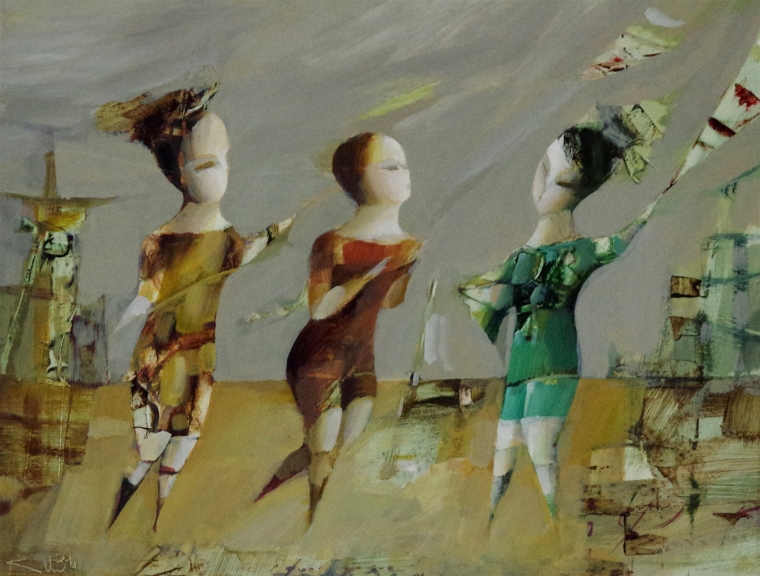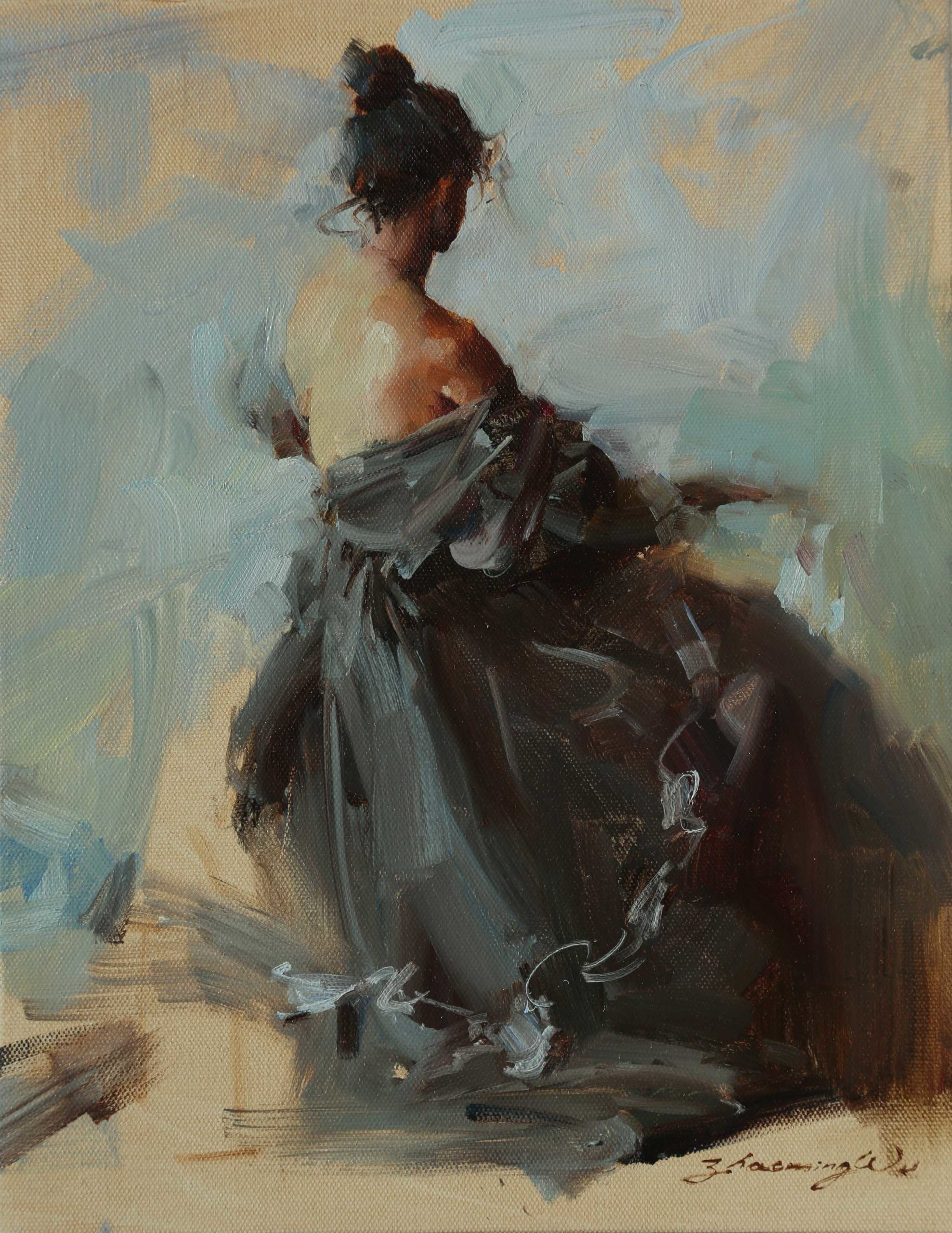Figurative Oil Painting: From Concept to Canvas - A Step-by-Step Strategy
Figurative Oil Painting: From Concept to Canvas - A Step-by-Step Strategy
Blog Article
A Journey Through the Globe of Figurative Oil Paint: Discovering the Special Features and Emotional Deepness of the Medium

Background of Metaphorical Oil Painting
Emerging during the late Middle Ages and growing throughout the Renaissance, metaphorical oil painting has a rich history that reflects both artistic innovation and cultural evolution. At first, oil paints were used in Europe as a means to enhance the luminosity and depth of shade in art work. Artists such as Jan van Eyck spearheaded the tool, showing its prospective to capture intricate information and structures, thus enabling an extra natural representation of the human form.
As the Renaissance progressed, prominent numbers like Leonardo da Vinci and Michelangelo expanded the borders of metaphorical oil painting. They stressed physiological accuracy and viewpoint, producing works that shared emotion and narrative deepness. The medium's versatility enabled testing with light and shadow, bring about the advancement of chiaroscuro techniques that better enhanced the aesthetic experience.
Special Characteristics of the Tool
The evolution of metaphorical oil painting has actually been considerably affected by the special characteristics of the tool itself. Oil paint, composed of pigments suspended in oil, supplies artists an impressive adaptability that allows for a large array of structures and coatings. Its sluggish drying out time enables careful mixing and layering, which can create depth and luminance unattainable in other mediums.
In addition, oil paint's rich pigmentation gives vibrant colors that keep their strength in time. This particular is vital in figurative paint, where recording the nuances of skin tones and psychological expressions is extremely important. The ability to accomplish soft transitions and subtle gradients improves the natural quality of subjects, enabling artists to communicate intricate psychological states.
Additionally, oil paint adheres well to various surfaces, such as timber, canvas, and steel, widening the extent of imaginative expression. The tool's adaptability sustains various approaches, from detailed realism to expressive brushwork, enabling artists to discover their specific styles.
Inevitably, the one-of-a-kind properties of oil paint not only improve the aesthetic experience however also empower musicians to interact profound narratives, making metaphorical oil painting a deeply evocative art kind.
Styles and strategies Utilized
Within the realm of metaphorical oil paint, artists use a varied range of techniques and designs that add to the deepness and splendor of their work. One noticeable method is glazing, where clear layers of paint are applied over dried out layers, enabling light to penetrate and mirror, boosting brightness and deepness. This technique is frequently made use of to accomplish a feeling of realism and complexity in complexion.
Another method is impasto, where thick layers of paint are applied with a scheme knife or brush, developing a textured surface area that adds a three-dimensional high quality to the painting. This style can stimulate a visceral feedback, drawing the visitor in through its responsive nature.
Artists likewise explore different brushwork designs, from fine, in-depth strokes that capture complex features to wider, extra expressive strokes that communicate activity and emotion (figurative oil painting). The option of shade combination substantially affects the overall mood of an item, with cozy tones typically presenting feelings of comfort and trendy tones suggesting sorrowful
In addition, the integration of chiaroscuro, the contrast between light and darkness, permits artists to create remarkable results that boost the narrative quality of their work. Each method and design is meticulously selected to raise the customer's experience and understanding.
Psychological Deepness in Metaphorical Art
Psychological depth serves as a foundation in figurative art, enabling musicians to go beyond plain depiction and involve viewers on a profound level. This emotional resonance is frequently accomplished with the nuanced representation of human numbers, expressions, and communications. Artists harness the power of shadow, light, and shade to stimulate sensations that reverberate deeply with the target market, developing a natural link to the subject.
In metaphorical oil painting, the complex layering of paint can show the complexities of human emotion. The choice of palette, whether warm or cool, plays an essential role in setting the state of mind and ambience of an item. Softer shades may stimulate peace and self-questioning, while strong, contrasting shades can interact tension and dramatization.

Influential Artists and Their Works
Countless influential musicians have actually considerably formed the landscape of figurative oil painting, each contributing one-of-a-kind perspectives and methods that proceed to inspire modern makers. Among these artists, Lucian Freud attracts attention for his intense mental deepness and raw representation of the human kind, frequently obscuring the lines in between beauty and decay. Freud's works, defined by thick, impasto brushstrokes, welcome viewers to confront the complexities of identity and susceptability.

Likewise, Andrew Wyeth's precise realism in items like "Christina's Globe" catches profound narratives within seemingly straightforward make-ups. His usage of light and shadow evokes a feeling of fond memories and emotional resonance, attracting visitors right into the intimate worlds he portrays.
In the world of contemporary art, Kehinde Wiley has gained acknowledgment for his lively, larger-than-life portraits that test standard notions of depiction. By placing individuals of shade in contexts similar to classical portraiture, Wiley's job redefines the canon of art history.
These artists, alongside others, have More Bonuses not just enriched metaphorical oil paint yet have likewise expanded the discussion surrounding society, identity, and feeling, making certain that the medium continues to be a crucial form of expression in the art globe. figurative oil painting.
Conclusion
In verdict, figurative oil paint remains an effective medium that envelops the intricacies of human emotion via its rich coloring and versatile methods. The historic development of this art kind, combined with its special characteristics, permits for profound creative expression. Strategies such as glazing and impasto enhance the psychological vibration of each piece, while the contributions of significant artists remain to motivate and shape the discourse surrounding this ageless style. The journey with metaphorical oil paint reveals its enduring value in the art world.
The expedition of metaphorical oil paint supplies an extensive insight into the interplay of technique, emotion, and historical context that defines this venerable medium. Oil paint, made up of pigments put on hold in visit homepage oil, uses musicians an impressive versatility that allows for a broad range of structures and surfaces.Within the realm of figurative oil painting, artists employ a diverse array of techniques and styles that add to the deepness and splendor of their job.Many prominent artists have considerably shaped the landscape of figurative oil paint, each adding special point of views and methods that continue to inspire modern makers.In verdict, metaphorical oil painting remains over at this website an effective tool that envelops the intricacies of human feeling through its abundant coloring and functional methods.
Report this page